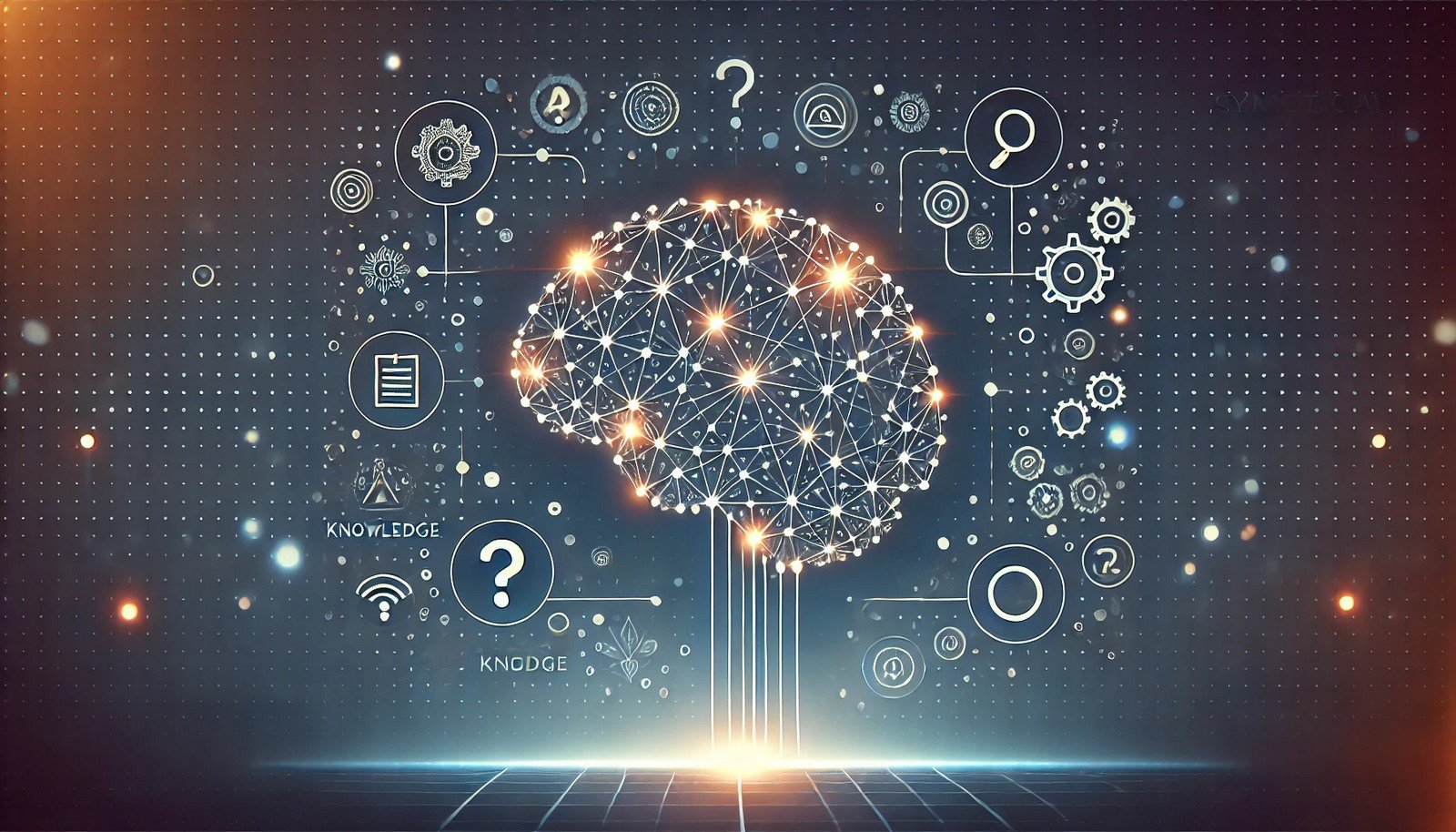Symbolic AI

Quick Navigation:
- Symbolic AI Definition
- Symbolic AI Explained Easy
- Symbolic AI Origin
- Symbolic AI Etymology
- Symbolic AI Usage Trends
- Symbolic AI Usage
- Symbolic AI Examples in Context
- Symbolic AI FAQ
- Symbolic AI Related Words
Symbolic AI Definition
Symbolic AI is an approach within artificial intelligence where human knowledge and reasoning are represented through symbols. In symbolic AI, machines are programmed with sets of rules, symbol structures, and logic to solve problems or perform tasks. This type of AI uses "if-then" rules to mimic human reasoning, based on the premise that human thought can be structured in terms of symbols and rules. With symbolic AI, systems rely on symbolic representations of knowledge—such as objects, actions, and their relationships—to process information logically. Its applications often include expert systems, knowledge representation, and natural language processing.
Symbolic AI Explained Easy
Imagine you have a set of building blocks labeled with letters and numbers. Symbolic AI is like a set of instructions that tells you how to arrange these blocks to create different things, like a house or a car. These instructions don’t change, so each time you follow them, you’ll build the same thing. Symbolic AI uses rules like "if this happens, then do that," so it’s like following a recipe step-by-step. It’s good for tasks where everything can be described clearly and doesn’t change a lot.
Symbolic AI Origin
Symbolic AI has its roots in the early developments of artificial intelligence, primarily emerging during the 1950s and 1960s. Researchers at that time were influenced by the belief that human intelligence could be simulated using symbolic representations and formal logic. This approach gained traction with the development of programs like the Logic Theorist, designed by Allen Newell and Herbert A. Simon in 1955, which aimed to mimic human problem-solving using symbolic logic. Symbolic AI dominated AI research for several decades, until the rise of machine learning approaches in the 1980s and 1990s.
Symbolic AI Etymology
The term "symbolic" comes from the Latin symbolum, meaning "symbol" or "token." It refers to the use of symbols—letters, numbers, or abstract shapes—that represent elements of knowledge or actions within a system. In symbolic AI, these symbols are combined with structured rules to model human reasoning processes.
Symbolic AI Usage Trends
Symbolic AI once formed the backbone of AI research, with significant applications in fields like natural language processing, automated reasoning, and robotics. Over time, however, the popularity of symbolic AI declined with the emergence of machine learning and neural network-based AI. Symbolic AI is still used today, particularly in applications requiring precise logic or clear rule-based structures, such as legal and medical systems, where decision-making needs transparency. Recently, hybrid approaches combining symbolic and machine learning models have been explored to leverage both the interpretability of symbolic AI and the adaptability of machine learning.
Symbolic AI Usage
- Formal/Technical Tagging: Artificial Intelligence, Logic-based AI, Rule-based Systems, Expert Systems
- Typical Collocations: Symbolic reasoning, knowledge representation, rule-based AI, expert systems, logical inference, knowledge graphs
Symbolic AI Examples in Context
Medical Diagnosis Systems: Symbolic AI is often used in expert systems to diagnose medical conditions based on symptoms by applying predefined logical rules.
Legal Reasoning Software: In law, symbolic AI can be applied to infer decisions based on legal precedents and structured rule sets.
Natural Language Processing: Symbolic AI techniques analyze and process language, enabling understanding of grammar structures and meaning.
Symbolic AI FAQ
- What is Symbolic AI?
Symbolic AI is a branch of artificial intelligence that uses symbols and logical rules to represent human knowledge and problem-solving processes. - How does Symbolic AI differ from Machine Learning?
Symbolic AI relies on predefined rules and symbols, while machine learning uses data and algorithms to learn patterns without explicit instructions. - What are common applications of Symbolic AI?
Common applications include medical diagnosis systems, expert systems, legal reasoning tools, and natural language processing. - Is Symbolic AI still used today?
Yes, it is often used in fields requiring clear, rule-based decision-making, such as healthcare, law, and robotics. - Why is Symbolic AI considered transparent?
Symbolic AI is transparent because it follows explicit rules, making its decision-making process easy to understand. - What are the limitations of Symbolic AI?
Its limitations include difficulty handling ambiguous data, lack of adaptability, and reliance on predefined rules. - How does Symbolic AI handle language?
It uses linguistic rules and structured representations, enabling it to understand grammar and semantics in language processing. - Can Symbolic AI work with Machine Learning?
Yes, hybrid models combine symbolic reasoning with machine learning to improve adaptability and interpretability. - What is knowledge representation in Symbolic AI?
Knowledge representation involves encoding information about the world in symbols and rules to simulate human understanding. - Who were pioneers in Symbolic AI?
Notable pioneers include Allen Newell, Herbert A. Simon, and John McCarthy.
Symbolic AI Related Words
- Categories/Topics: Artificial Intelligence, Knowledge Representation, Logic, Rule-Based Systems, Natural Language Processing
- Word Families: Logic, Reasoning, Representation, Symbolization, Inference
Did you know?
In 1956, Allen Newell and Herbert A. Simon created the Logic Theorist, considered one of the first symbolic AI programs. It could prove mathematical theorems, marking a significant milestone in AI. This program’s success showed that machines could mimic human reasoning, which inspired further research in artificial intelligence.
PicDictionary.com is an online dictionary in pictures. If you have questions or suggestions, please reach out to us on WhatsApp or Twitter.Authors | Arjun Vishnu | @ArjunAndVishnu

I am Vishnu. I like AI, Linux, Single Board Computers, and Cloud Computing. I create the web & video content, and I also write for popular websites.
My younger brother, Arjun handles image & video editing. Together, we run a YouTube Channel that's focused on reviewing gadgets and explaining technology.



Comments powered by CComment